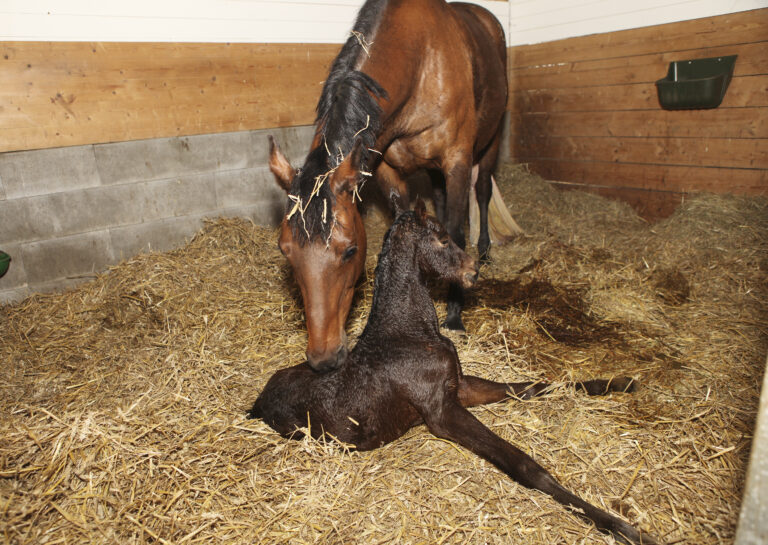
This article first appeared in the Summer 2016 issue of EquiMangement magazine.
The myriad of deworming products lining store shelves and filling pages of websites gives the illusion of a near-endless supply of chemical deworming options for horses.
Owners sometimes forget that all of those tubes, gels, packs and powders belong to one of only four classes of chemical dewormers. is oversight, combined with outdated deworming strategies (such as rotational or “when I remember” approaches), has contributed to the development of anthelmintic-resistant populations of roundworms and small strongyles.
With no new chemical dewormers on the horizon, novel strategies for controlling equine internal parasites are mandatory. Preliminary research into such alternative approaches revealed the ability of a bacterial protein to kill small strongyle third-stage larvae (L3s), also referred to as the infective cyathostomin larvae.
This research, widely referred to as “Let the Germs Get the Worms,” was spearheaded by Ra Aroian, PhD, from the University of Massachusetts, with the support of a multi-institutional team of researchers, including Martin Nielsen, DVM, PhD, Dipl. EVPC, ACVM, assistant professor at the University of Kentucky’s Gluck Equine Research Center.
“In vitro experiments revealed that the crystal protein Cry5B, produced by the bacterium Bacillus thuringiensis, kills L3s, even those resistant to chemical dewormers,” said Nielsen.
Whether or not this technique will prove successful in live horses or if Cry5B will be selectively eliminate other internal parasites, such as ascarids, currently remains unknown.
After years of preliminary work, brainstorming and crowdfunding, Aroian, Nielsen and a team of additional researchers recently received a grant from the United States Department of Agriculture supporting a five-year project to develop “Let the Germs Get the Worms.”
“We had our first meeting and are preparing to perform some initial experiments to ultimately determine the safety and the efficacy of this deworming strategy in horses. Ultimately, the goal is to treat horses with a probiotic formulation and evaluate the e effects,” Nielsen said.
“The first phase of the study is focused on identifying the right formulation of this bacterial dewormer,” continued Nielsen. “We are evaluating both ruminants and horses. With horses being monogastric hindgut fermenters, the formulations might have to be quite different for these two categories of animals.”—Stacey Oke, DVM, MSc








